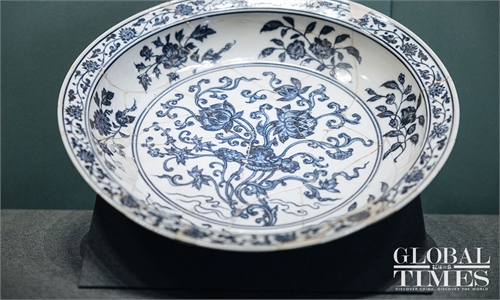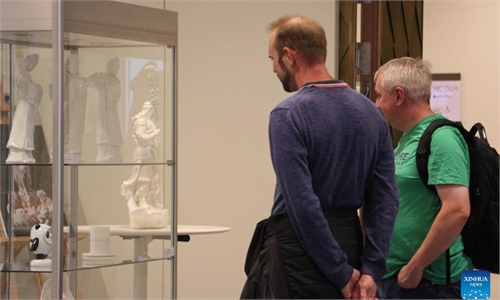ARTS / CULTURE & LEISURE
Global artists pursue dreams in China's porcelain capital
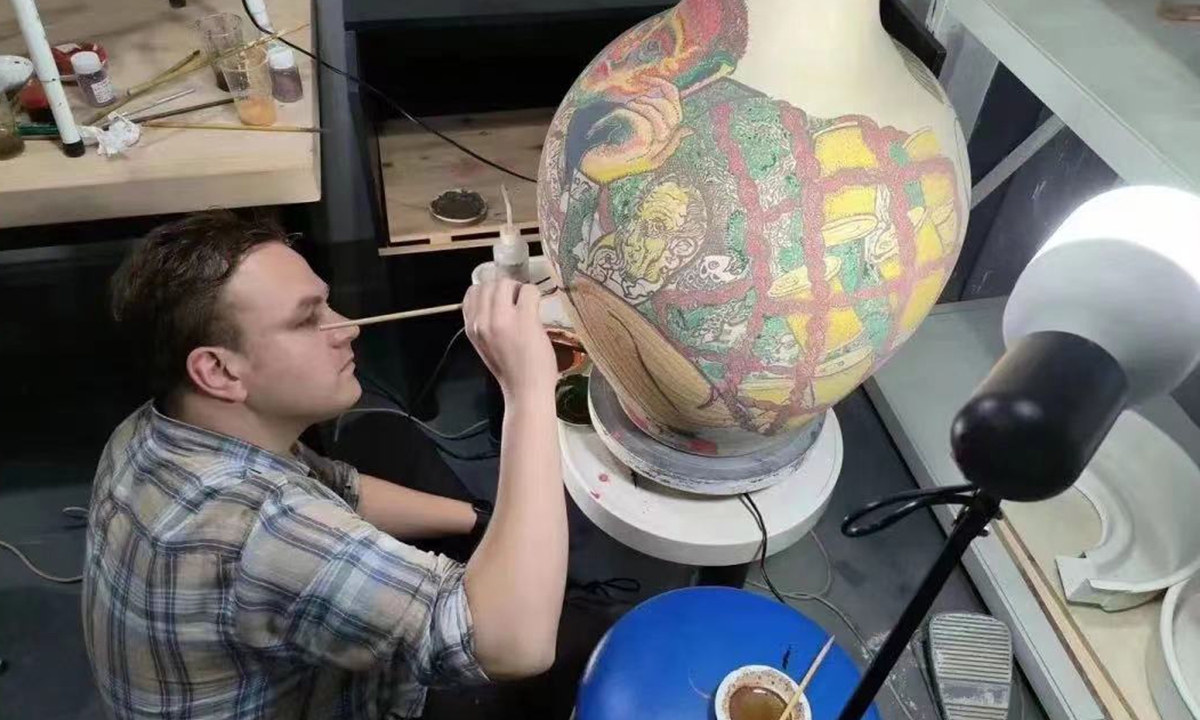
Spanish porcelain artist Jaume Ribalta
Known around the world as the "porcelain capital" of China, Jingdezhen in East China's Jiangxi Province is a city of immense cultural and historical significance. From the Song Dynasty (960-1279) to the present, Jingdezhen has been a leader in the production of porcelain, and is now seen as a symbol of traditional Chinese artistry and craftsmanship.Slow pace of life, welcoming atmosphere and strong artistic dynamic have enticed a growing number of foreign artists from all over the world to settle down in Jingdezhen in recent years.
These new residents have launched porcelain businesses and turned their artistic ideas into the driving force for the development and innovation of the porcelain culture. Acclimatizing to the Chinese culture, the overseas artists have fallen in love with Jingdezhen.
Following my heart
At the spring and autumn fairs in Taoxichuan cultural block of Jingdezhen, a beautifully shaped porcelain teapot caught the reporter's attention: The front of the teapot was painted with thick leaves dotted with red fruit, and a lifelike swallow with a branch in its beak was painted on the lid as if it is about to fly towards people.
"This is the cherry tree in the yard of my studio," Spanish porcelain artist Jaume Ribalta carefully held up the teapot and explained the ideas behind this work.
"This cherry tree has lush branches and leaves, symbolizing the timelessness of nature. That swallow is me, a Spaniard living in China."
Jaume told the reporter that before coming to China, he had been engaged in porcelain painting-related work for a long time. "My artistic creation is deeply rooted in traditional culture. I need to understand the origin of porcelains and the history of its development and evolution, so coming to Jingdezhen is a natural thing."
In 2022, Jaume decided to settle in Jingdezhen and continue to study porcelain painting, to pursue his dreams in this city with a history of more than 2,000 years of porcelain making.
In Jingdezhen, Jaume met many like-minded young people seeking to reimagine traditional porcelain art and express their unfettered creativity through porcelain.
"The rich historical and cultural knowledge is the basis for the innovative development of porcelain art. The blending of tradition and modernity in Jingdezhen offers a lot of inspiration for artists," said Jaume.
In Jaume's works, the blue and red glazes on the blue and white porcelain collide with each other.
"Many of my ideas and creativity come from traditional Spanish culture. Slowly I realized that some of the artistic elements may have originated in Jingdezhen. I hope to integrate Chinese and Spanish traditional cultures and showcase them in my works," Jaume said.
Just like the Arabs transported porcelains to Europe along the Silk Road, he also hoped to follow the steps of ancient people in his own way and strive to build a bridge for exchanges and mutual learning among civilizations.
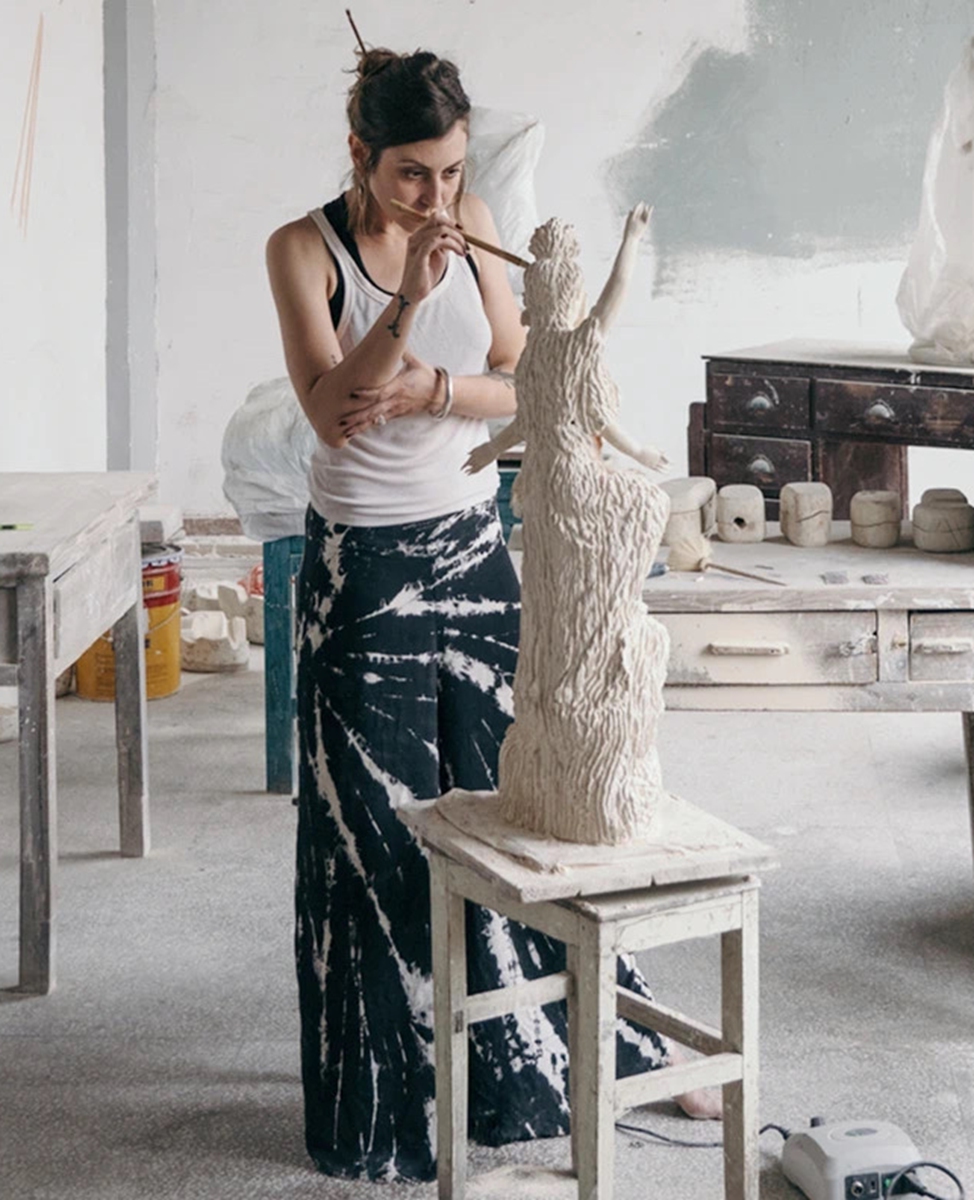
French porcelain artist Kami
Playing with clay"I used to move around a lot, and I never expected to settle in Jingdezhen," said French porcelain artist Kami who studied porcelains in Switzerland, the Netherlands, and the UK before finally settling in Jingdezhen, where she has been living for eight years. From working by herself to owning two workshops, she can speak fluent Chinese, and has been used to eating spicy snacks and soaking feet in hot water. Kami found a sense of belonging in Jingdezhen.
When she was 11 years old, Kami enjoyed playing with clay in a handicraft class and made various animals out of it. "Clay is a very powerful medium that allows me to perceive myself and the world around me," Kami said.
She discovered that the effect can be seen immediately in every step of kneading clay sculptures. Repeated trial and error in the process of learning helped her stay focused, which is a big reason why she initially chose porcelains as her medium of choice.
During a field trip, Kami came to Jingdezhen for the first time, where she saw the original porcelain-making materials and techniques.
"Jingdezhen preserves ancient craftsmanship and historical knowledge, and has an irresistible charm," she said. After graduating from the Royal College of Art, Kami settled in Jingdezhen as learning skills and talking with porcelain masters is a lot of fun.
When creating the sculptures of the figures in Outlaws of the Marsh, one of the famous ancient Chinese novels, Kami tried to use blue and white porcelain crafts to draw Cupid's Arrow and other Western cultural elements on one of the heroes Wu Song's body, and put a baseball cap on Wu, which made the two Chinese craftsmen speechless.
"There are both cultural differences and generation gaps between us. At first, they did not agree with my ideas. Although we have different understandings of art, they eventually respected my idea," said Kami who believes that Jingdezhen is an open and inclusive city where she enjoys working with such proficient artists.
Denis Naymark, an artist born in the 1990s from the US, also fell in love with Jingdezhen because of clay. In 2013, Naymark, who loves porcelain art, lived briefly in Sanbao village on the outskirts of Jingdezhen to experience pottery making. He was captivated by the ancient houses and porcelain workshops in the village. Two years later, he was admitted to the Jingdezhen Porcelain University and named himself "Ni De Ming," which means "Xiao Ming who plays with clay."
"Jingdezhen's porcelain industry is full-fledged. You can buy various porcelain raw materials, and there are accomplished masters who help us realize our creativity and ideas," said Naymark. He told the reporter that since he grew up by New York's seaside, he has a passion for elements such as the ocean and forest. In Jingdezhen, he created porcelain plates with wave patterns, coral-shaped teapots among others, hoping to call on people to protect the marine ecological environment.
It was reported that at the peak of the "migration boom," over 5,000 people from abroad settled down in Jingdezhen, including many internationally renowned porcelain artists and experienced scholars, making it a hub for cultural exchanges.
Jingdezhen has also inked partnerships with more than 30 universities in the US, the UK, France, Japan, South Korea and other countries and regions, providing opportunities for international students to come to China to learn porcelain knowledge, and using porcelain as a medium to enhance cultural exchanges.
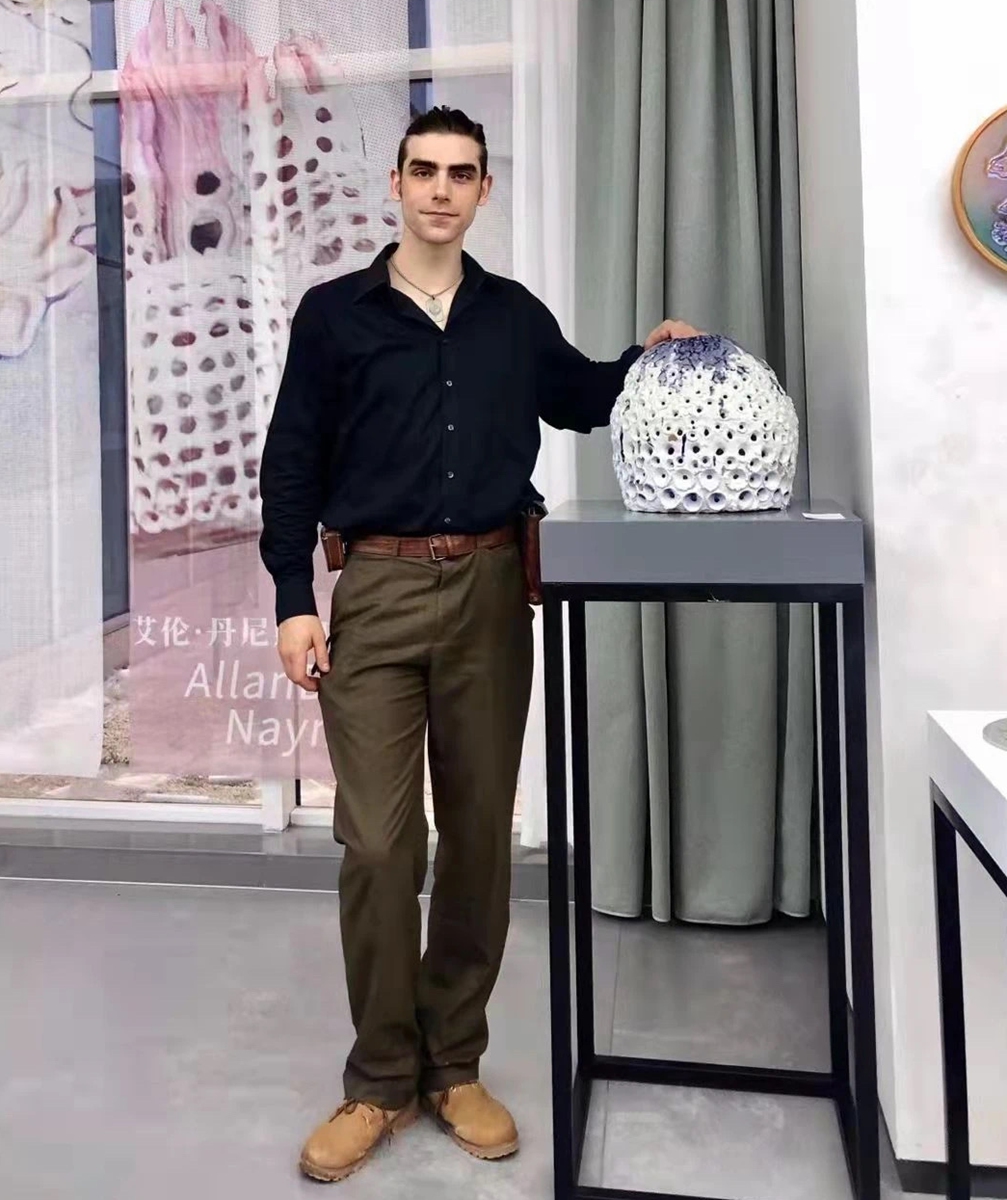
American artist Denis Naymark
Profound impactIn her workshop, Kami likes to drink tea, burn incense, and read Chinese classical novels such as A Dream of Red Mansions. After work, she often rides a motorcycle on the streets of Jingdezhen, and buys a fried dough stick with sesame paste when passing by a breakfast shop. In the eyes of local people who know her well, this French girl is not a foreigner, but a "new resident."
"Sometimes I also visit other places in China to learn about the porcelain cultures of different regions," Kami said. She talked with porcelain practitioners in Dehua, East China's Fujian Province. As a porcelain artist who has lived in Jingdezhen for a long time, Kami also introduced Jingdezhen's porcelain making skills and working environment to her Chinese counterparts.
"Jingdezhen has the world's most advanced porcelain making system, with plenty of proficient craftsmen excelling at every aspect of the craft. They often spend their entire lives on this single pursuit," said Kami.
Spanish artist Jaume was excited to deepen his understanding about Chinese porcelain art and see as many different types of porcelain as possible.
"After the fair, I'm going to Henan Province to see Junci Porcelain [an imperial kiln which dates back to the Song Dynasty]. In Spain, the porcelains on the east and west coasts may be very similar, but in China, different provinces may produce porcelain in completely different styles. But I still want to come back to Jingdezhen after seeing Junci Porcelain. After all, I am one of the few Spaniards here," said Jaume.
Yet, Naymark planned to find inspiration elsewhere and create large-scale porcelain works. "I don't want to move to a big city. I still want to find a small and livable place like Jingdezhen," Naymark said.
H said that when he lived in Jingdezhen, the villagers near his workshop knew him well. The unique artistic atmosphere and the relaxed tone had a profound impact on him. "Maybe I'll come back later," he said.
The porcelain culture not only draws foreigners to Jingdezhen, but also sees them take root in the mountainous city. In order to allow more foreign artists to adapt to the life of Jingdezhen, the local government has established a foreign talents service office, providing support in visa, residence and entrepreneurship. It is part of the efforts to create a welcoming atmosphere that connects and retains international porcelain enthusiasts so that more foreigners can pursue their dreams in the capital of porcelain.
